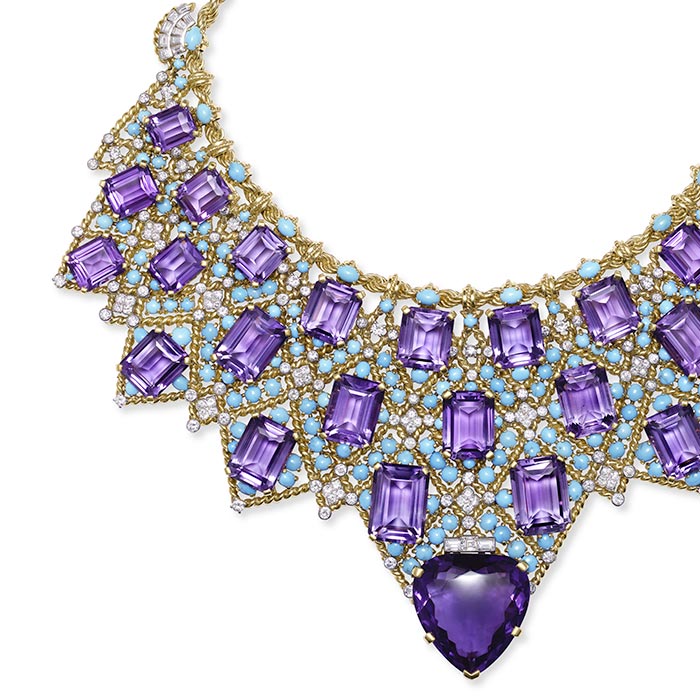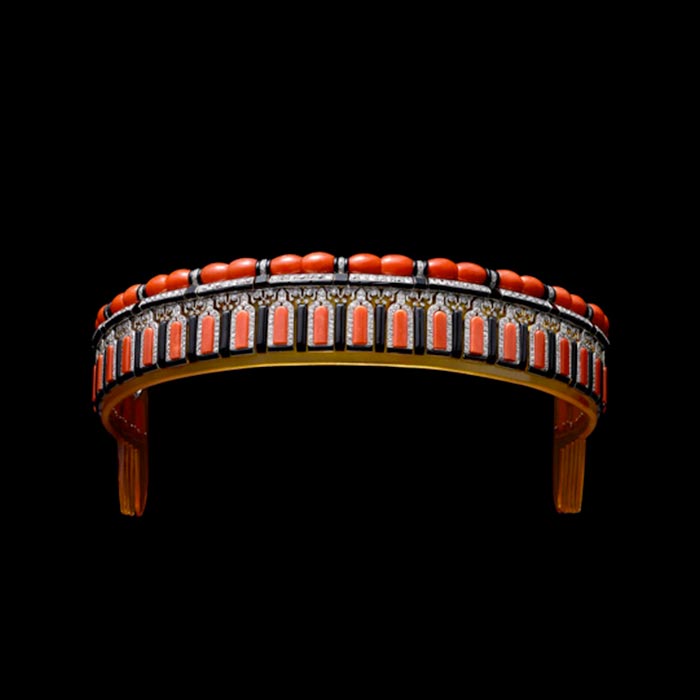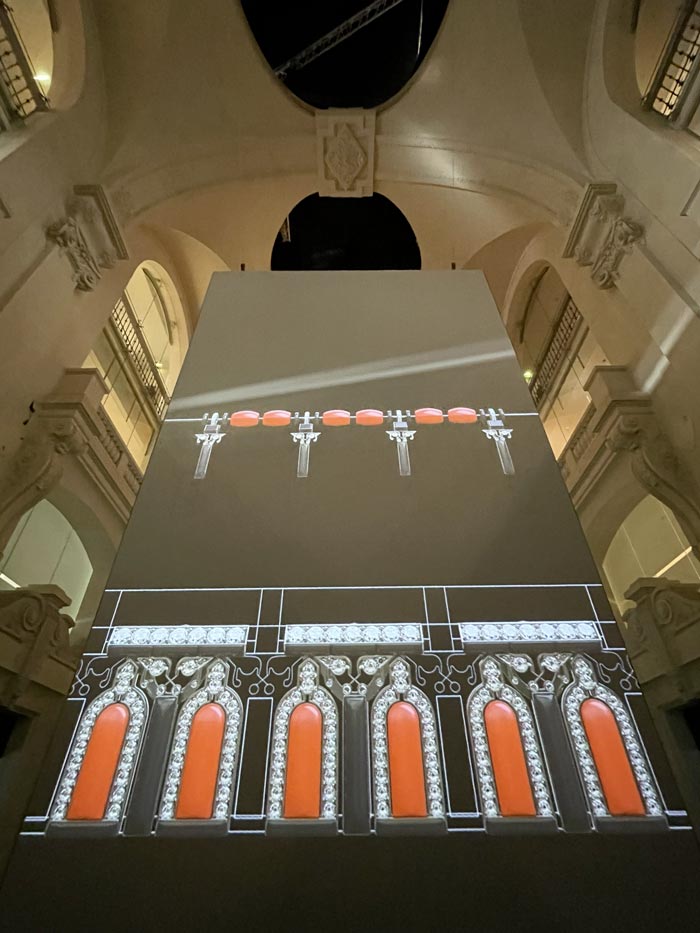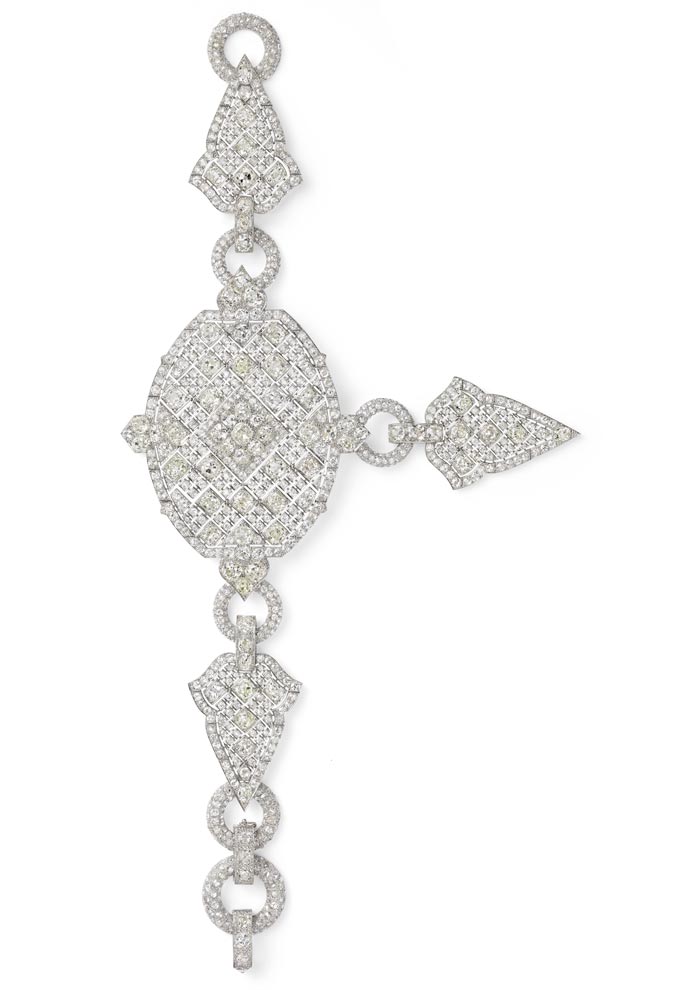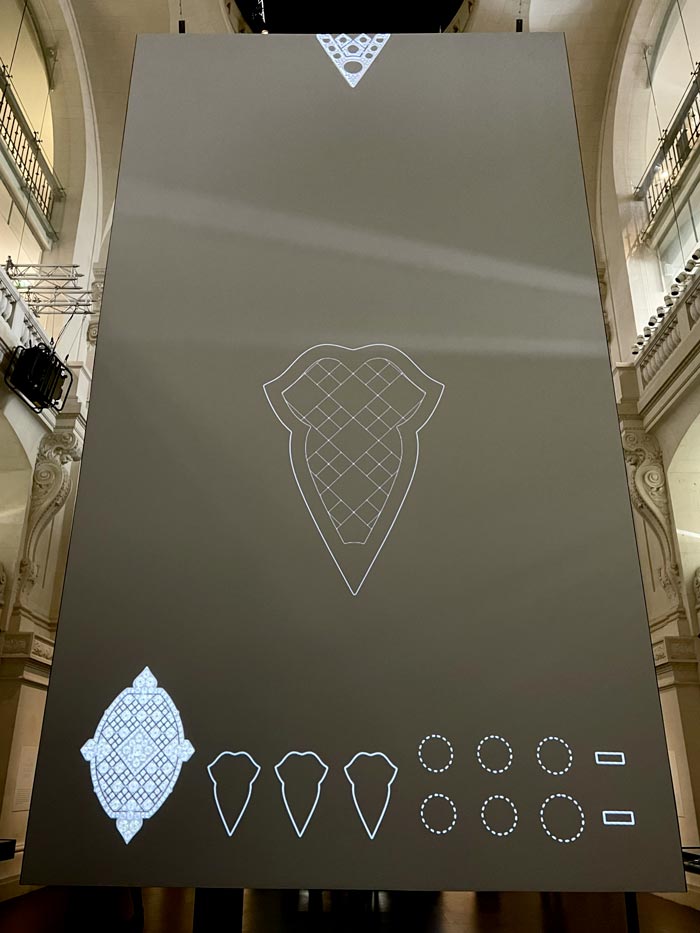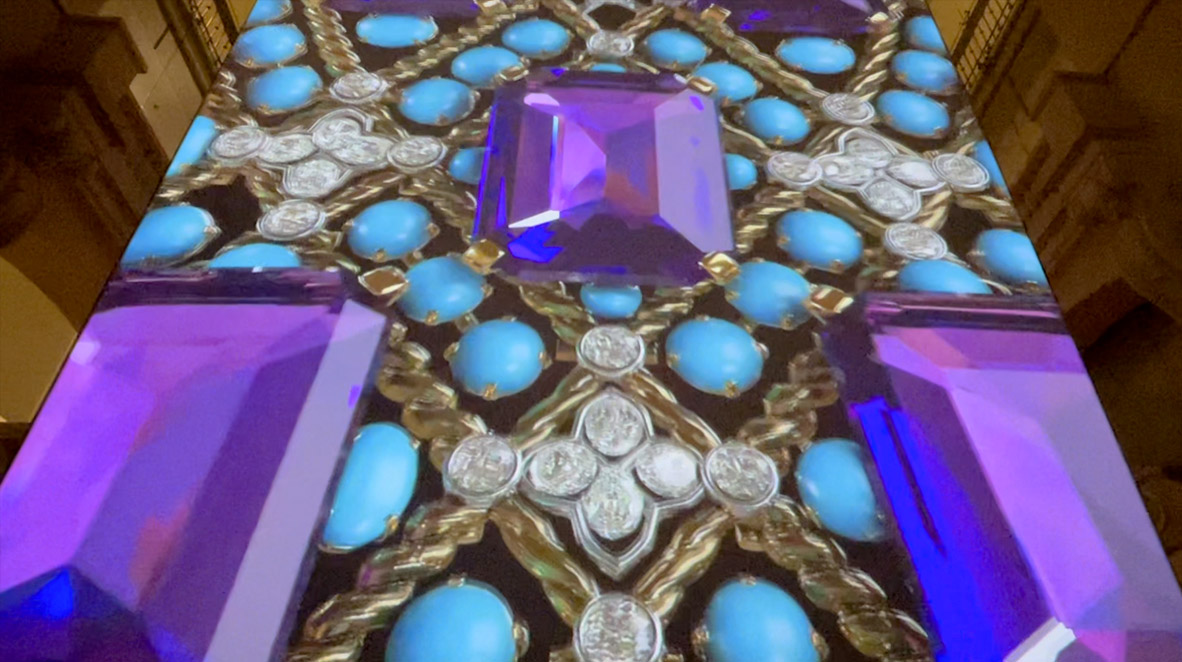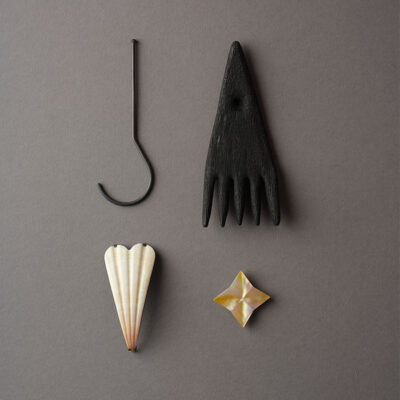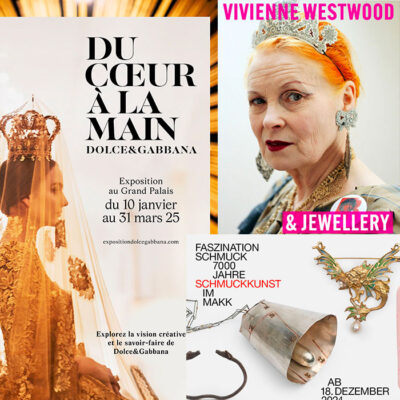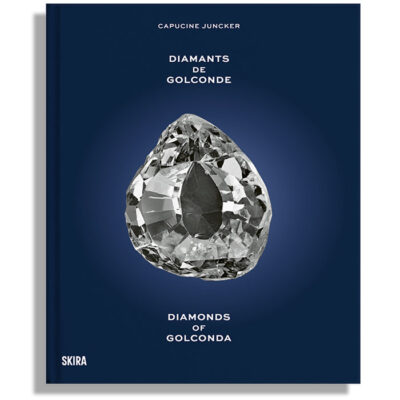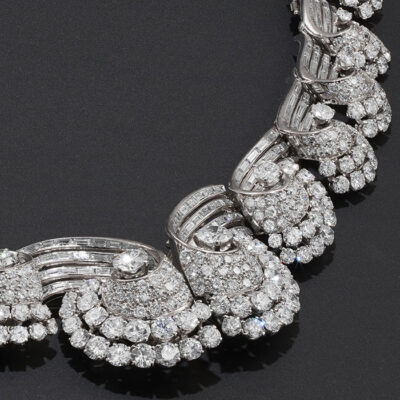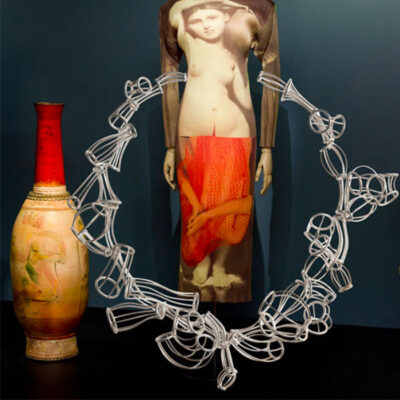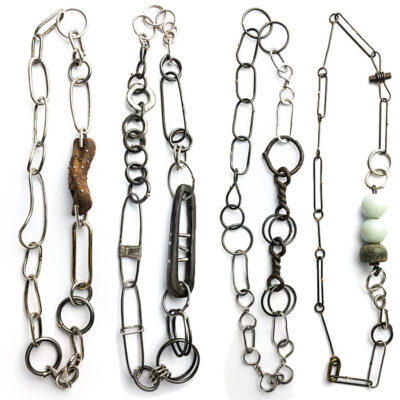My agenda
03 November 2021
Share
Below the center of the nave of the Musée des Arts Décoratifs…
Giant screens loom below the center of the nave of the Musée des Arts Décoratifs, each projecting a 3D image of an Islamic building whose lines are broken down and recomposed into a jewel emblematic of the exhibition. A glimpse at three examples…
By Sandrine Merle.
1/ The purple and turquoise “Drapery” necklace
Jeanne Toussaint created new color combinations, including violet and turquoise. In 1953, a daring chromatic duet was launched with this necklace made for the Duchess of Windsor. It includes 29 superb amethysts supplied by the Duke. This mixture echoes those created by Louis Cartier: blue and green (what he called “peacock decor”) or turquoise and lapis lazuli blue, electric. Inspired by the jewelry of Maharajas, Louis Cartier also juxtaposed blue sapphires, green emeralds and red rubies in extravagant Tutti Frutti combinations. A first in Europe!
2/ The coral and tortoiseshell tiara
This tiara also dates from 1922, at the height of the Art Deco period, capturing the quintessence of Cartier style. To the traditional black and white mix, Charles Jacqueau, who was then creative director under Louis Cartier, added an exotic note: “humble coral” – in the words of the newspaper La Gazette du bon ton at the time. Cartier’s colorful vocabulary was thus constantly enriched, especially since it was treated – in a particularly rare move – with tortoiseshell, thus creating a new chromatic experience.
3/ The diamond bazuband
This bazuband, whose central decoration evokes a mashrabiya, was made in 1922 at the request of Sir Dhunjibhoy Bomanji, a Bombay-based shipowner living in England. The bracelet, traditionally worn on the upper arm by high-ranking people in India and Iran, appears on the portrait of the sovereign of the Qajar dynasty (in the first part of the exhibition). Its setting, made with silk cords for greater flexibility, fascinated Cartier jewelers. but rather than simply reprising the form, they used it to inspire numerous techniques, settings and assemblies, as shown in the 1923 watch.
Scenography DS+R (Diller Scofidio + Renfro)
« Cartier et les Arts de l’Islam – Aux sources de la modernité. » at the Musée des Arts décoratifs, Paris jusqu’au 20 février 2022
Related articles :
“Cartier and the Arts of Islam”, in the footsteps of Louis Cartier…
6 reasons to go and see the “Cartier and the Arts of Islam” exhibition


